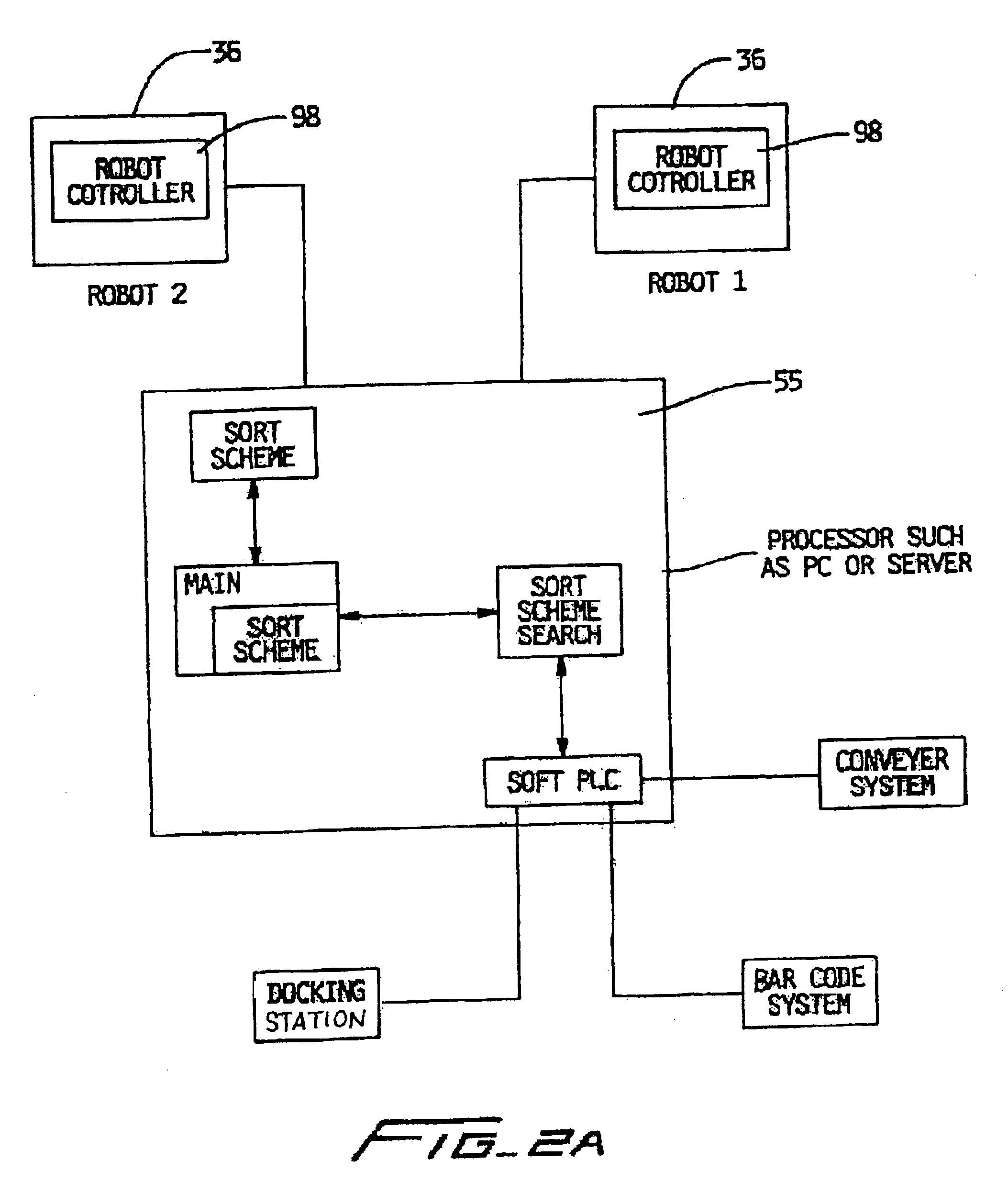Method of using a robotic containerization and palletizing system
a containerization and palletizing system technology, applied in the field of robotic containerization and palletizing system, can solve the problem of reducing the floor space needed for the system, and achieve the effect of shortening the clamp travel, improving speed performance and system throughput, and less room for the gripper to actua
- Summary
- Abstract
- Description
- Claims
- Application Information
AI Technical Summary
Benefits of technology
Problems solved by technology
Method used
Image
Examples
Embodiment Construction
A containerization and palletizing system 30 made in accordance with the teachings of the present invention is shown in FIGS. 1 through 3B. The system 30 includes two cells 32 and 34 each equipped with a gantry or overhead-type robot 36, although the invention may be implemented with just one cell and one robot as well as other types of robots. Each cell 32, 34 has a frame 38 which may be secured to a hard surface such as a concrete floor 40. The space between the frame members may be enclosed with a perimeter fence 42, a mesh, a similar material, or even other types of walls. One or more gates or doors 44 may be provided to permit access to the interior of the cell. Each cell 32, 34 has a plurality of places or bays 46 for pallets 49 and carts 50. Sensors (not shown) sense the presence or absence of pallets 48 and carts 50 (generically referred to as a “containers”) in a bay and that information is communicated to a system controller 55 (described further below). Pallets and carts ...
PUM
 Login to View More
Login to View More Abstract
Description
Claims
Application Information
 Login to View More
Login to View More - R&D
- Intellectual Property
- Life Sciences
- Materials
- Tech Scout
- Unparalleled Data Quality
- Higher Quality Content
- 60% Fewer Hallucinations
Browse by: Latest US Patents, China's latest patents, Technical Efficacy Thesaurus, Application Domain, Technology Topic, Popular Technical Reports.
© 2025 PatSnap. All rights reserved.Legal|Privacy policy|Modern Slavery Act Transparency Statement|Sitemap|About US| Contact US: help@patsnap.com



